I begin this blog by asking you to think about your own identity. Think about the categories of gender, race, class, sexuality, religion, age, ethnicity, and ability and where you would align yourself. Now think, are you one without the other? Does one aspect of your identity take over one half of your body and the other the remaining? Or does each aspect of your identity simultaneously make up, you?
I ask you to reflect on this as we work to understand the interconnectedness of the ecofeminist perspective. Rather than understanding this theoretical framework to be a hierarchy of oppression, we must understand its relation to intersectionality as oppression is not felt singularly but rather multidimensionally.
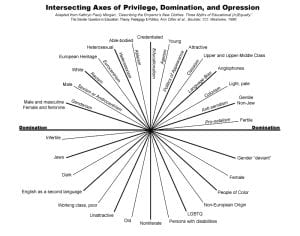
Take a look at the image included to your right. Splicing the circular figure in half is the line of domination. Above domination represents the categories of identity deemed “superior” in societal context; along the lines are the “isms” in which those with privilege enact when perpetuating discrimination towards those outside of their identity. Below domination is the social categories in which oppression is felt most intensely. However, what is most important to note in this image is not the hierarchical aspect of social category but rather, the form of the image. All categories are in a circular shape, connected at a single point in the center. This is what intersectionality is to be understood as, “…a web of entanglement…each spoke of the web representing a continuum of different types of social categorization such as gender, sexuality, race, or class, while encircling spirals depict individual identities” (Kings 65). One may identify with multiple lines of the spiral but it is intersectionality that allows experiences of identity to occur simultaneously.
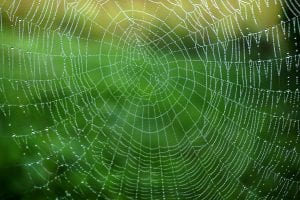
It is also important to note that all experiences are unique and oppression is felt differently depending on one’s place in society. The intersecting axes of privilege, domination, and oppression show that one may have privilege in one social category, but feel the effects of oppression in another. For example, a black heterosexual man may have privilege in the category of gender and sexuality but face marginalization in a society plagued with racism. Therefore, it is crucial to understand this perspective as a web of interconnectedness. As Kings describes, “The spirals collide with each spoke at a different level of the continuum, illustrating the context-specific privilege or discrimination experienced by the individual. A spider’s web preserves the necessary complexity of intersectionality and the potential ‘stickiness’ of cultural categories, which can often leave people stuck between two or more intersecting or conflicting social categories” (65-6).
When relating intersectionality to the ecofeminist perspective, it is important to understand its historical implications. Hobgood-Oster provides a Western perspective of ecofeminism in which “…oppression of the natural world and of women by patriarchal power structures must be examined together or neither can be confronted fully” (2005). This can be understood to analyze oppression as a hierarchy on the basis of sexism. While true, gender is not the only social category that experiences harmful effects in connection to environmental degradation.
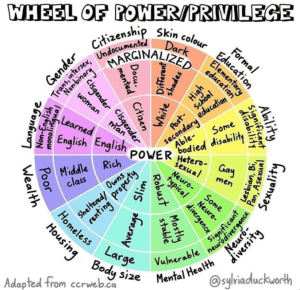
We often analyze oppression based on a single category, this creates hierarchical thinking in terms of dominance; however, as Kings states, “Discrimination is not merely about gender or race or class, but rather an intersection of these different social identities which lead to the generation of various locations of vulnerability” (82). When applying intersectionality in an ecofeminist perspective, exploitation of the environment is viewed in connection to the oppression of women through an interconnected web as subjugation is not felt the same across populations as identity is diverse.
Leah Thomas touches upon the importance in understanding the difference between ecofeminism and intersectional environmentalism as although both understand the degradation of the environment to be in connection with deeply rooted societal problems, “…Intersectional Environmentalism considers all aspects of someone’s identity like race, culture, religion, gender, sexuality, wealth, and more” making it more inclusive (2020).
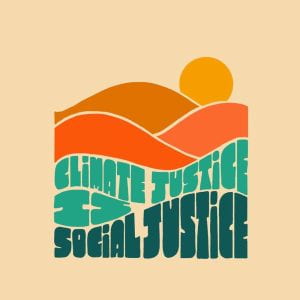
Taking a flashback to our previous sections, I correlate this closely to the work of Bina Agarwal in which focuses on a non-Western perspective of ecofeminism, feminist environmentalism. Agarwal expresses not only the link between women and nature in social context, but also through material realities as the connection between women and the environment is “…structured by a given gender and class (/caste/race) organization of production, reproduction, and distribution” (127). This works to relate ecofeminism to intersectionality as an analytical tool that recognizes the connection between oppression of the environment and the oppression of women is not biologically determined or based solely on the category of sex but rather, the differing aspects of one’s identity works interconnectedly to shape the experience of oppression faced. For example, a rural woman living in India is more likely to experience oppression of the environment closely due to the disadvantages of social identity as the dependence on the environment is linked to survival.
In this, we can use intersectionality as a tool to better understand the effects of degradation in varying communities and how to become activists in feminist environmentalism. Kings writes intersectional theory is important to recognize “…unequal experiences, not just between the North and South, but also within these very broad and non-homogenous categorizations…” (73). Western perspectives of ecofeminism can mistakenly focus on oppression of women as a whole rather than breaking down the varying social identities within this group of individuals. It is for this reason that intersecting oppressions prevent the elimination of other forms of oppression. Afterall, we are in an interconnected web. Working to abolish sexism will not solve the problems of patriarchal society as identities are simultaneously interacting to shape our experience. It is not until we eliminate each “ism” in the web that we will have a society free of exploitation.
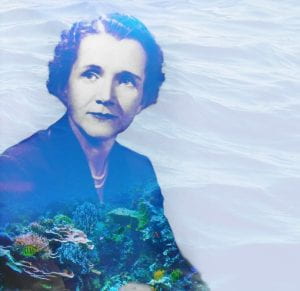
Rachel Carson provides insight into the ecological importance of the ecofeminist interconnected perspective in her piece, Undersea. Carson takes the reader on a journey of life throughout the numerous layers of the ocean often forgotten in the disconnection between human and non-human life. She writes that we must “shed our human perceptions of length and breadth and time and place, and enter vicariously into the universe of all-pervading water” (Carson 63). That is, we must rid ourselves of the “superior species” perception and rather place ourselves in a world of diverse life that is often forgotten even though we share the same environment. In this piece, the ecological web of life is celebrated in its diversity as each living thing in the “place of paradoxes” (64) contributes to the well-being of another form of life. Just as intersectionality is important to recognize the various identities of human life oppressed by exploitation of the dominant, this ecofeminist perspective of interconnectedness is important in ecology as “Individual elements are lost to view, only to reappear again and again in different incarnations in a kind of material immortality” (Carson 67). If we continue to treat life as a hierarchy, ignoring the multiple layers of oppression connected in one’s identity, then we cannot effectively eradicate maltreatment of the natural world and all life forms within it.
I will leave you with a quote to consider as you go forth in a society that works to isolate and subjugate, “Engaging with intersectionality can help sensitize ourselves and others to the ways in which different forms of disadvantage can act as a method of silencing the most vulnerable and oppressed” (Kings 83).
Works Cited:
Agarwal, Bina. “The Gender and Environment Debate: Lessons from India.” Feminist Studies, vol. 18, no. 1, 1992, pp. 119–158., https://doi.org/10.2307/3178217.
Carson, Rachel. “Undersea.” Visions for Sustainability , vol. 3, 2015, pp. 62–67., https://doi.org/10.7401/visions.03.06.
Hobgood-Oster, Laura. “Ecofeminism: Historic and International Evolution.” Encyclopedia of Religion and Nature, edited by Bron Taylor, Continuum, London & New York , 2005, pp. 533–539, http://www.religionandnature.com/ern/sample/Hobgood-Oster–Ecofeminism.pdf.
Kings, A.E. “Intersectionality and the Changing Face of Ecofeminism.” Ethics and the Environment, vol. 22, no. 1, 2017, pp. 63–87., https://doi.org/10.2979/ethicsenviro.22.1.04.
Thomas, Leah. “The Difference between Ecofeminism & Intersectional Environmentalism.” The Good Trade, 11 Aug. 2020, https://www.thegoodtrade.com/features/ecofeminism-intersectional-environmentalism-difference/.
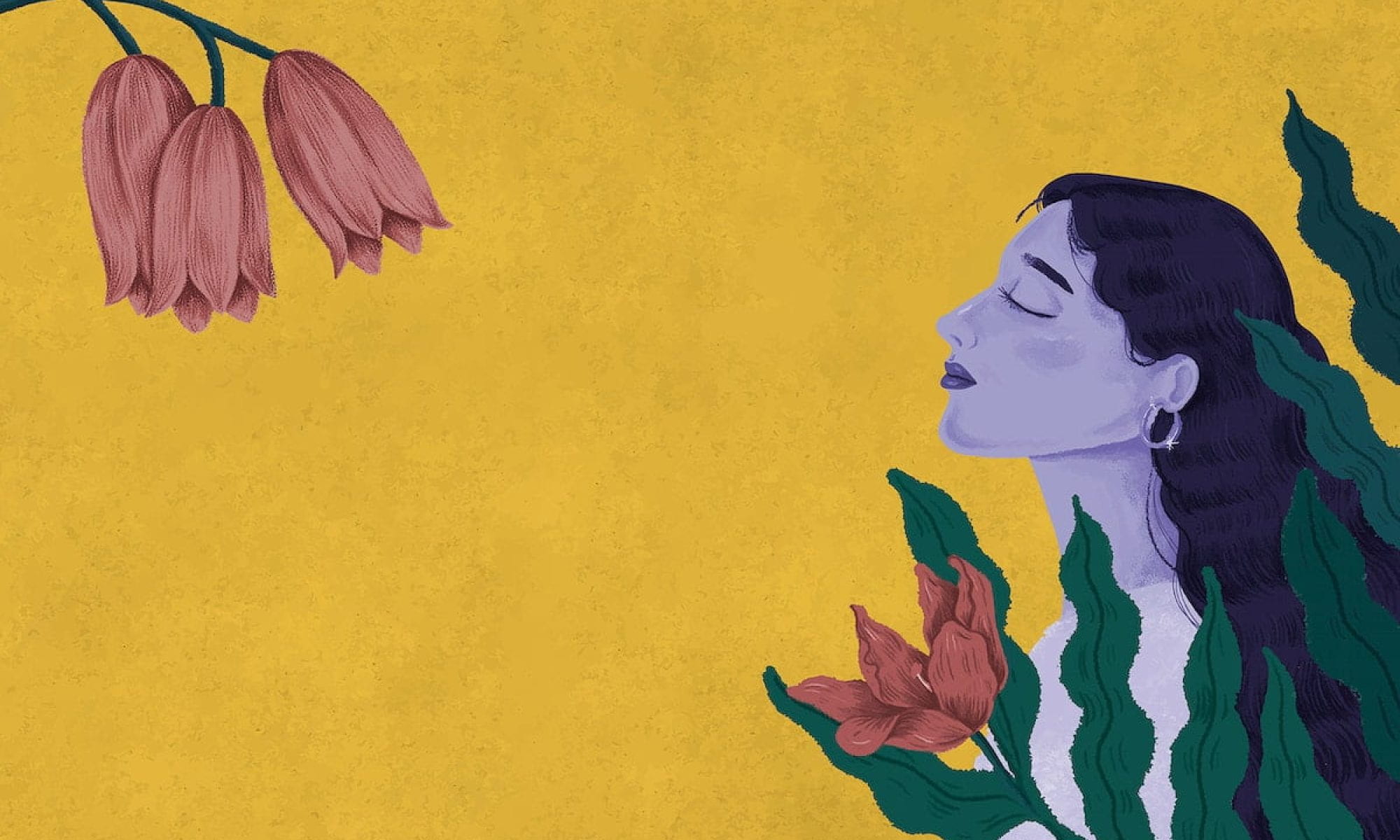
Hi Kylie,
Thank you for your thought-provoking post. I especially appreciated your incorporation of Rachel Carson’s work. I found her writing emotionally moving, but your post made me better see how this work fits in with ecofeminist perspectives and can relate to intersectionality.
In particular, when examining Carson’s work again, I was struck by the similarities in dealing with scale and complexity that are present in both intersectionality and ecological preservation. For intersectionality, Kings notes “the broadness of intersectional approaches can be overwhelming,” especially when scholars attempt to exhaustively identify different aspects of intersectionality (2017, p. 69). Or, conversely, Kings describes challenges of scholars taking a more simplified and unified approach that may attempt universality in inappropriate contexts. Kings illustrates the difficulty of addressing a variety of interconnected issues that must be complex enough to be reflective of people’s lived reality but simplified enough to allow us to see meaningful patterns.
In a similar way, Carson leads us through many levels of scale when looking at the ocean. Carson addresses the environment on a micro-level with living organisms so small that “your two hands might scoop up as many of them as there are stars in the Milky Way” (2015, p. 64). Simultaneously, Carson urges readers to look at the ocean as a vast being in which “Every living thing of the ocean, plant and animal alike, returns to the water at the end of its own life span the materials that had been temporarily assembled to form its body” (2015, p. 66). In order to effectively protect the ocean environment, we must grapple with both the micro and the macro and how creatures at different levels of scale interact or are impacted by each other.
One impression that I am left with is the value in examining ecological and social issues on multiple scales and from multiple perspectives. As with intersectionality, I think the goal is not finding one definitive set of factors that correctly describe a situation. Instead, intersectionality is another tool that lets us see situations that we many completely overlook through more conventional means. This type of approach would be beneficial in addressing both environmental and social inequalities.
Carson, R. (2015). “Undersea.” Visons for Sustainability, 3, pp. 62-67. DOI: 10.7401/visions.03.06. (Original work published 1937)
Kings, A. E. (2017). “Intersectionality and the Changing Face of Ecofeminism.” Ethics & the Environment, 22(1), pp. 63-87.
Hi Jennifer,
Thank you for taking the time to read my blog post and comment! I enjoyed reading your extended connection to Carson’s work after you examined it once more. Her piece is truly inspiring and important in understanding an intersectional approach to ecology and the ecofeminist perspective. Intersectionality is indeed a necessarily tool to address the environmental and social inequalities that plague our patriarchal culture as it diminishes exclusionary perspectives in finding solutions in oppression.
Best,
Kylie C.
Hi Kylie!
I think it was an awesome move to have your readers evaluate their own intersectionality before digging into the meat and bones of the piece. By having them draw their own conclusions and see how your topic fits into their own life immediately engages them and opens the floor for you to explain your topic—spotlight blazing and microphone in hand.
I want to reply directly to your closing quote from Kings: “Engaging with intersectionality can help sensitize ourselves and others to the ways in which different forms of disadvantage can act as a method of silencing the most vulnerable and oppressed” (Kings 83).
Basing all theories on a foundation of intersectionality is the only way that we can come to true answers and action. As you discussed, nature isn’t a hierarchical ladder, its an interconnected web, and we must conform to this interconnectedness in order to reach true freedom and equality.
For too long, we have been imposing our own patriarchal hegemony onto society and the environment, and it’s obviously no longer working (I doubt that it ever actually did). It only works for those at the top of the ladder, but we need to create a world in which we’re all interconnected since that’s the way that the world actually functions.
In her piece for TeenVogue, Leah Thomas wrote that “to truly stand for justice for all women and the planet, ecofeminism must also be intersectional.” And that’s the truth of it! In our diverse world, intersectionality is essential.
Here’s the link to the TeenVogue piece if you’re interested: https://www.teenvogue.com/story/intersectional-environmentalist-ecofeminism
Hi Jasmine,
Thank you for taking the time to read my blog post and comment! I’m glad to hear you found my introduction in evaluating our own identities before understanding the importance of intersectionality in a broader sense to be applied to it’s connection in oppression. I absolutely agree that society focuses on hierarchy and privilege rather than inclusivity and acknowledging the connection that we all hold to not only each other but the natural environment. Thank you for including that quote from Leah Thomas, intersectionality is certainly essential.
Best,
Kylie C.
Kylie – great work with this post! In asking the reader to think about their own identity, it is an invitation to explore the many categories of intersectionality that they fit into, and may not even be aware of. They can then see how that correlates to the categories within the image of the intersecting identity axes. It can be challenging to objectively look at, and understand one’s own privileges, especially if it’s a new language or concept to dabble in. In asking the reader to more closely explore the labels that are associated with their own privileges and/or oppressions, they can see a clearer picture of intersectionality and where they fit into the overlapping web it weaves.
I also appreciate how you point out what King shares about intersectional theory, “…unequal experiences, not just between the North and South, but also within these very broad and non-homogenous categorizations…” (73)”. This made me think of how Leah Thomas wrote about the many ways in which her identity is defined and how “My Blackness shouldn’t be an extra ‘add on’ to my feminism or environmentalism” (Thomas). These specific quotes by both authors help demonstrate how intersectionality as a whole, is comprised of many different parts. Not only can the parts be unequal in ways, the intersectional web has a wide span in that it applies to individuals, geography, race, sex, class, and more.
Kings, A.E. “Intersectionality and the Changing Face of Ecofeminism.” Ethics & the Environment, vol. 22 no. 1, 2017, p. 63-87. Project MUSE muse.jhu.edu/article/660551.
Thomas, Leah. “The Difference Between Ecofeminism and Intersectional Environmentalism – the Good Trade.” The Good Trade, 3 Feb. 2023, http://www.thegoodtrade.com/features/ecofeminism-intersectional-environmentalism-difference.
Hi Christine,
Thank you for taking the time to read my blog post and comment! I’m glad to hear my introduction of intersectionality in connection to our identities was effective in encouraging the reader to explore the intersection of privilege and disadvantage in one’s own embodied experiences. Your connection to Kings’ quote and Thomas’ statement is important, one’s identity should not be an addition or viewed exclusionary but rather part of their interconnected web that influences one’s life simultaneously.
Best,
Kylie C.